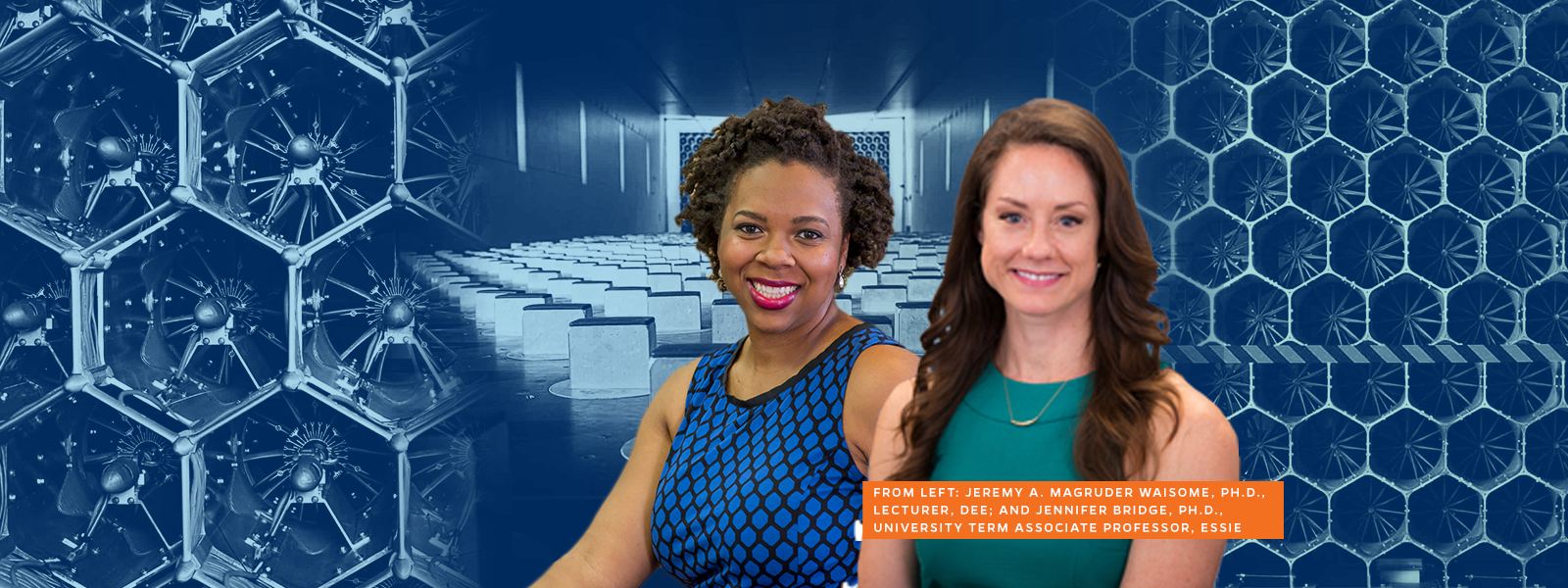Researchers in the Engineering School of Sustainable Infrastructure & Environment (ESSIE) in the Herbert Wertheim College of Engineering at the University of Florida received a $4.5 million cooperative agreement from the National Science Foundation (NSF). This funding is a renewal of an existing Natural Hazards Engineering Research Infrastructure (NHERI) Experimental Facility, which supports a highly skilled staff of engineers and technicians to facilitate studies for NSF-funded researchers from across the country to advance experimental wind hazard research. The funding will also support a K-12 STEM teacher training program to be implemented throughout Florida.
“The research conducted in our facility enhances the understanding of wind hazards and the impacts they have on civil infrastructure,” said Jennifer Bridge, Ph.D., the principal investigator and director in the NHERI Experimental Facility. “This new knowledge leads to safer, more efficient and more resilient infrastructure.”
The wind hazard experimental facility at UF is one of seven NHERI facilities throughout the United States that support research on natural hazards such as tsunamis, earthquakes, hurricanes and tornados, along with structural damage mitigation and societal impacts.
The UF facility is located in the Powell Family Structures & Materials Laboratory on the University of Florida’s East Campus. The central apparatus is a rapidly reconfigurable boundary layer wind tunnel coupled with a 319-fan flow field modulator. Each fan can be individually controlled to replicate transient extreme wind phenomena. This advanced flow control was developed in-house and allows researchers to recreate a wide variety of wind hazard scenarios from downbursts to hurricanes. Infrastructure test subject models are created using a suite of 3D printers, a large format 3D router and machine shop.
Concurrent with the research, this NHERI facility pursues a STEM education mission by providing tours and hands-on projects for K-12 students, and curriculum co-development with K-12 teachers. Jeremy A. Magruder Waisome, Ph.D., the education specialist in NHERI and a lecturer in the Department of Engineering Education, says that support will be allocated to the development and implementation of a unique teacher training program. “I’m a proponent of the learner-centered approach to teaching. We will invite teacher participants in the program to help develop what they feel is necessary to enhance their K-12 curriculum,” Dr. Waisome said. The K-12 Teacher Training Program will be focused on underrepresented groups and Title I schools.
“In the first year, we’re going to look at design standards that are relevant to wind hazards, and we want to encourage a deeper understanding in design thinking, inquiry and engineering in general,” Dr. Waisome added. This program will provide networking opportunities and methods to improve the self-efficacy of teachers while exposing students to a diverse work environment in engineering.
Dr. Waisome explains that this program can have a long-lasting impact on future generations, similar to her experience with a STEM program she attended in middle school. “In seventh grade, I went to a summer camp at a college in Georgia and I learned about different fields in STEM. I got to experiment, design things and get exposure to engineering. We went to a big fancy laboratory and I got to tour a nuclear reactor facility. The person operating the reactor was a Black woman with a Ph.D.—I saw her, and I knew that is who I wanted to be. I came back home, and I told my mom that I want to be an engineer, I want to have a Ph.D. in engineering,” Dr. Waisome said.
Including the initial funding in 2015, the NHERI facility at UF will have received a cumulative $8 million by 2025 to support natural hazards research.
“Securing another five years of support for UF NHERI places ESSIE and the University of Florida at the center of a small number of distinguished institutions conducting state-of-the-art wind hazards research in the laboratory,” said Kirk Hatfield, Ph.D., ESSIE Director.

